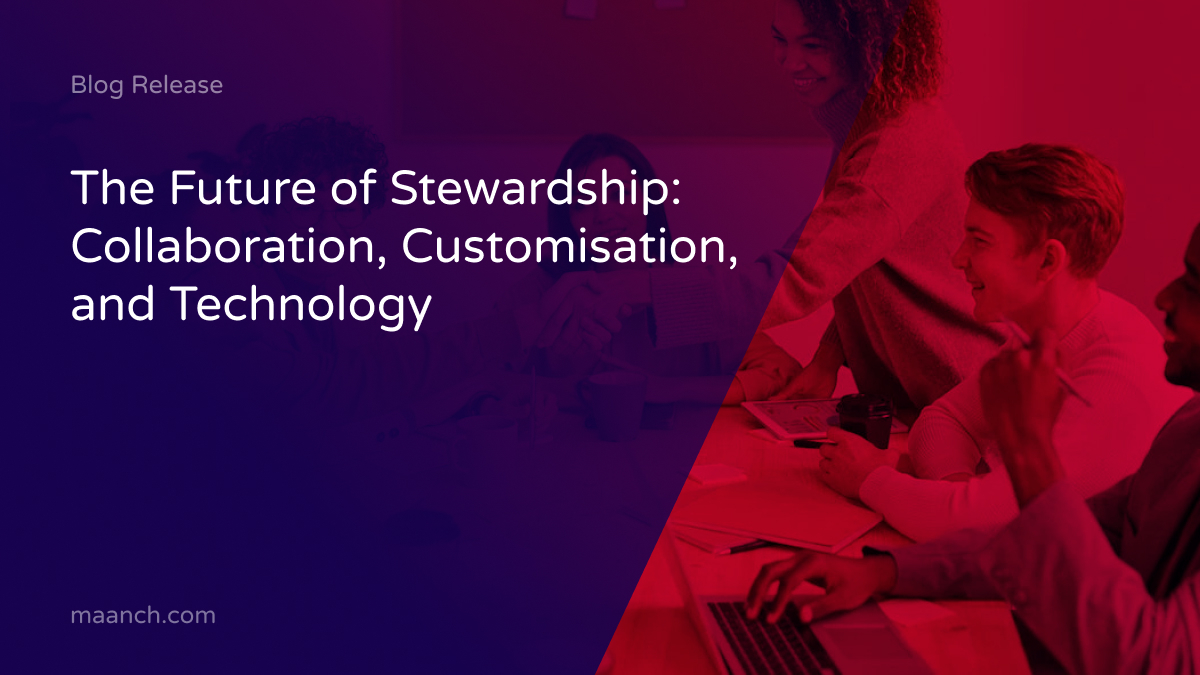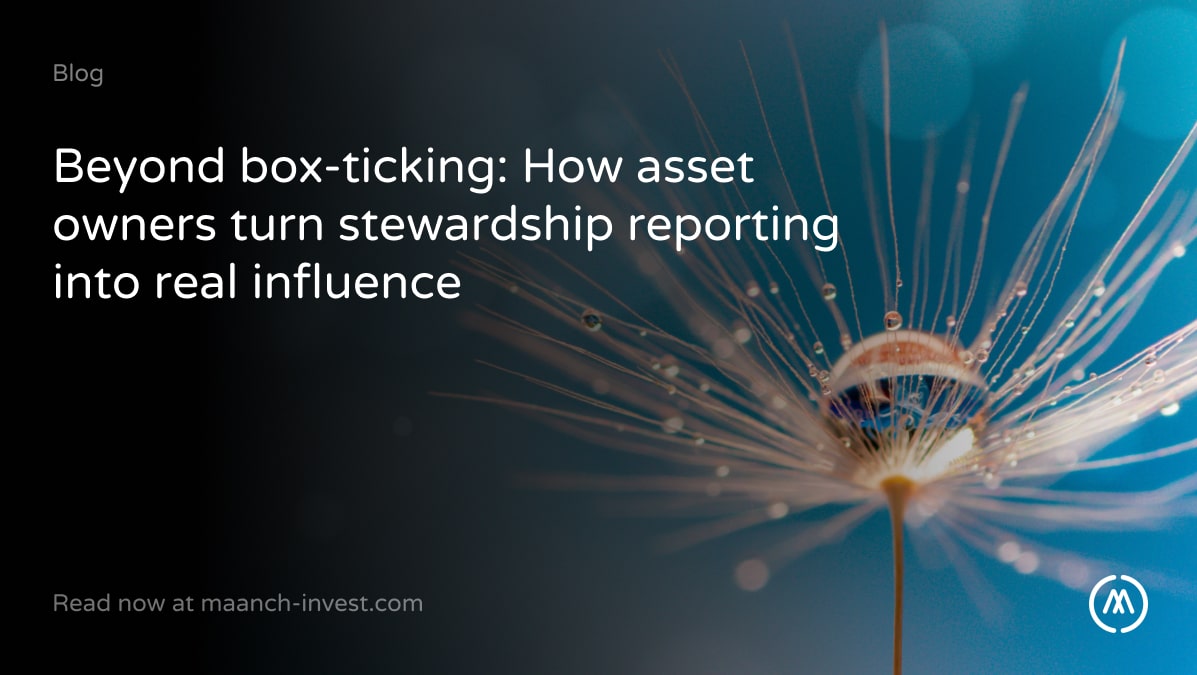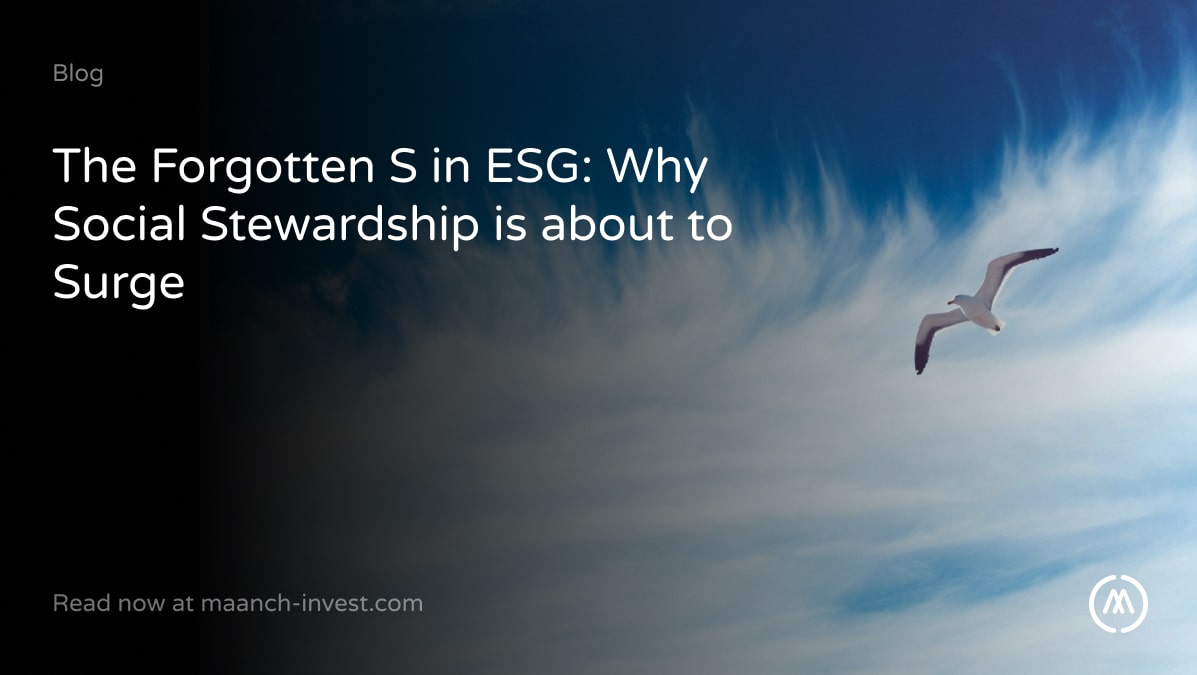Stewardship has long been a critical part of asset management. But as the world changes, so do the demands and expectations around it. Today, we see a shift towards more collaboration, greater customisation, and the adoption of advanced technology. These trends are transforming how asset owners and managers approach stewardship, particularly when it comes to voting on key issues like climate change, governance, and social responsibility.
This blog explores how the future of stewardship is being shaped by these three forces. As we move forward, it is evidently clear that those who embrace this new landscape will benefit the most, gaining stronger relationships with clients and deeper impact in the market.
Collaboration: Empowering the Asset Management Sector
Collaboration is fast becoming the cornerstone of effective stewardship. Historically, asset managers made voting decisions on behalf of their clients, without much input from the asset owners themselves. This dynamic is shifting. Asset owners—particularly pension funds, wealth managers, and institutional investors—are demanding a greater say in how their assets are managed and voted upon.
Pass-through voting is one of the key innovations driving this change. It allows asset owners to vote directly on issues, even when their assets are part of pooled funds. This creates a more collaborative relationship between asset owners and managers, empowering owners to align voting with their stewardship policies. Whether it’s voting on climate-related proposals, governance matters, or social issues, asset owners are now in the driver’s seat.
This trend is particularly evident among asset owners with multiple third-party managers. With the ability to consolidate voting strategies, asset owners can create a unified approach across all their holdings. This reduces fragmentation and ensures that their votes reflect a consistent set of values and priorities.
Collaborative engagements in stewardship are essential because they bring together diverse expertise and resources, leading to more effective and innovative solutions. By sharing responsibility, these collaborations foster a sense of shared ownership, enhancing trust and commitment among stakeholders. This collective approach allows for pooling resources, broadening impact, and ensuring adaptive, resilient management. Additionally, collaboration increases the legitimacy and buy-in of decisions, making them more sustainable in the long term. Overall, working together in stewardship efforts leads to more comprehensive, inclusive, and successful outcomes. It is crucial to understand how they work and how Investors can maximize their impact by championing them.
Key benefits of collaboration in stewardship:
- Greater alignment between asset managers and asset owners
- Enhanced flexibility in voting policies
- Increased engagement on environmental, social, and governance (ESG) issues
- Stronger relationships between asset managers and clients
- Clear direction to companies on investor expectations
Customisation: Meeting Unique Client Needs
As collaboration grows, so does the demand for customisation. Clients are no longer satisfied with a one-size-fits-all approach to voting and stewardship. Instead, they want their investments to reflect their unique values and objectives.
Customisation allows asset managers to tailor voting strategies to the specific needs of their clients. For instance, one asset owner may prioritise climate action, while another might focus on governance reforms. With advanced technology, these preferences can be incorporated seamlessly into the voting process.
This level of customisation is increasingly seen as a key differentiator for asset managers. Clients are more likely to stay loyal to managers who offer the flexibility to meet their specific goals. As competition intensifies in the asset management sector, customisation becomes an essential tool for retaining clients and attracting new ones. Another driver of customisation is the growing complexity of stewardship. Regulations are evolving, and investors are becoming more sophisticated in their expectations. For example, in the UK, the Department for Work and Pensions (DWP), the UK Stewardship Code and the Sustainability Disclosure Requirements (SDR) and investment labels regime of the FCA have placed greater emphasis on stewardship and ESG integration.
Key drivers of customisation in stewardship:
- Rising client expectations for ESG integration
- Increasing regulatory demands for transparency and accountability
- Desire for personalised voting policies that reflect individual goals
- Need for asset managers to differentiate themselves in a competitive market
Technology: Enabling the Future of Stewardship
The third pillar shaping the future of stewardship is technology. As the demands for collaboration and customisation increase, technology is stepping in to bridge the gap. Advanced platforms like Maanch are making it easier for asset managers and owners to coordinate voting, monitor outcomes, and stay compliant with regulations.
Moreover, technology enables transparency. With real-time dashboards and reporting tools, clients can track how their votes are cast and the impact of their decisions. This level of insight is invaluable in a world where stakeholders—whether pension beneficiaries, shareholders, or regulators—demand greater accountability.
Additionally, technology is facilitating deeper engagement between asset managers and owners. Tools that allow clients to express their preferences on specific issues are becoming more common. The result is subsequently a collaborative approach that balances the expertise of asset managers with the values of their clients.
The role of technology in the future of stewardship:
- Enhancing transparency with real-time reporting and dashboards
- Facilitating deeper engagement through client-driven voting tools
- Improving compliance with evolving regulatio
A Future of Stewardship Built on Choice with the help of Technology
The future of stewardship is clearly moving towards a model that prioritises choice—whether through collaboration, customisation, or technology. Asset owners are no longer passive participants in the stewardship process. They are in fact active collaborators, working closely with asset managers to ensure that their investments align with their values.
For asset managers, this new reality presents both challenges and opportunities. Those who invest in the right technology and embrace customisation will be in the best position to meet the growing demands of their clients. By offering greater visibility, they can build stronger relationships and foster greater loyalty.
Moreover, this shift towards greater choice in stewardship is not just a trend—it’s becoming a fundamental expectation. As regulatory scrutiny increases and ESG issues take centre stage, asset owners will continue to demand more from their managers. The firms that are prepared to meet these demands will thrive in this new environment.
How to prepare for the future of stewardship:
- Invest in advanced stewardship technology and real-time reporting.
- Collaborate closely with clients to understand their unique values and goals.
- Stay ahead of regulatory changes and ensure compliance with evolving stewardship standards.
Conclusion
The future of stewardship is one where collaboration, customisation, and technology come together to create a more dynamic, client-focused approach. As asset owners take a more active role in voting and engagement, the relationship between them and asset managers will only deepen. Technology will play a crucial role in enabling this transformation, providing the tools needed to meet the increasing demands for transparency, accountability, and impact.
For asset managers, the message is clear: embrace this future, or risk being left behind. The firms that lead the way in collaborative, customised, and tech-enabled stewardship will be the ones to succeed in the years to come.



